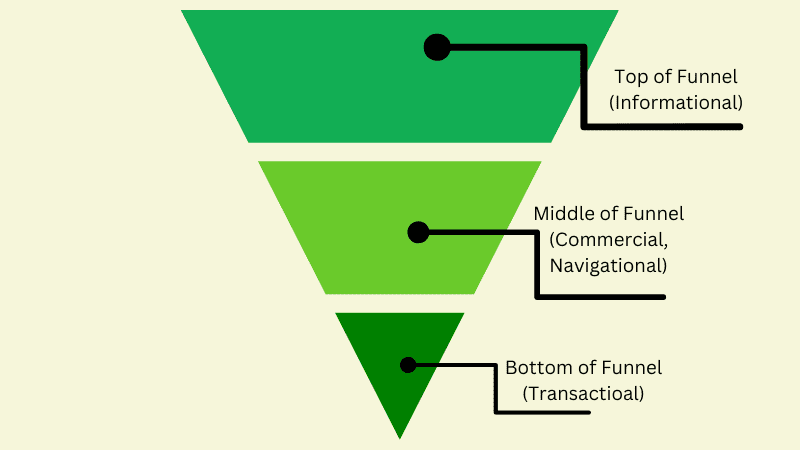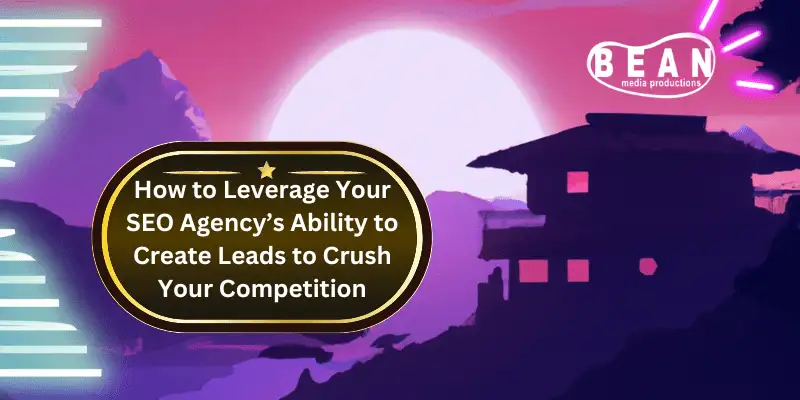Hello and welcome back to the blog here at Bean Media Productions, where we like to give you a little sneak peak beanhind the scenes of our little slice of the internet and digital marketing as a whole. In today’s digital age, SEO is an important tool in the marketer’s belt. Your SEO agency here in Buffalo, NY is best positioned to capture leads from search and turn them into customers.
“How important is capturing leads from search?” You may be wondering. Well – 68% of all online experiences begin with a search on an engine, they’ve become the leading gateway to discovering brands and ideas. Did you know that 63% of all online purchases are attributed to an online experience, be it ads, SEO, or otherwise? It’s true!
Utilizing SEO and SEM to capture leads at that top level is important, so much so that 70% of marketers agree that organic content (SEO) is at least as good or better than paid ads for generating qualified leads. Not to mention, leads acquired via SEO are notably less expensive than paid media!
Table of Contents
SEO Lead Generation
“What is SEO lead generation?” You might be asking. It’s the process of increasing your brand’s visibility by driving traffic to your website in an organic matter, through search engine results pages (SERPs), so more customers can find you, creating a snowball effect that captures qualified leads.
“What is SEO?”
Search Engine Optimization (SEO) is the term that marketers use that refers to organic marketing activity, like blog content, to aid you in achieving more visibility. SEO maximizes the number of visitors your webpage gets by ensuring your website and content are as high up the SERP as we can get it.
“Why is SEO Relevant?”
SEO, and especially generating leads via SEO, has a two-fold relevance to us today. Search engines like Google are among the most trusted in the world. Think about it, when you search for something, where do you go first? You either go to Google’s website directly or type your query into the address bar – which is linked to Google on most browsers. Due to this, people view the first results for their search on Google as the most trustworthy and reliable. The second aspect driving the importance of SEO is that higher placement leads to higher discoverability.
The higher and more often your website and its content appears atop the first page of search results, the easier it is for you to reach your target audience. The average click-through rate of the first page on Google is nearly 95%, with the top organic result being 31-43%. Let’s dive into capturing those leads.

How an SEO Agency Creates a Lead Generation Strategy
An SEO lead generation strategy developed by your SEO agency is a must to get organic traffic over to your site vs the competition. From there, optimization can separate regular searchers from audiences ready to convert into customers. These are the 5 strategies we follow to get the best qualified, organic leads for your brand.
Define Audience and Goals
Telling your digital marketing agency your goals is the first step in your SEO strategy. Your goals can’t be overly broad either – like “I want more leads” – It’s extremely difficult to maintain that and optimizer for it over time. Instead, it’s better to be specific with your goals and the key performance indicators (KPIs) you’d like tracked.
Some KPIs to target include:
- Organic Leads
- Organic Clicks and Impressions
- Total Organic Traffic
- Bounce Rate
- Conversion Rate
- Average Position
How Your Buffalo NY SEO Agency Uses Search Console and Analytics
Here at Bean Media, we have several avenues for tracking these KPIs over time, namely Google Search Console and Google Analytics. Search Console is great for tracking impressions and clicks over time, and Analytics is the tool for maintaining visibility over total traffic, new users, methods of acquisition, and bounce rate.
When your goals are developed and defined, we can move into your audience. Understanding your buyer persona, like pain points, needs, and type of marketing material most effective. Your content needs to not just capture any random web user, but those ready to purchase.
Why Your SEO Agency Audits Your Existing Content
1. What is an organic content audit?
Now that you have your goals and audience in mind, we can perform an organic content audit. What is that? A systemic analysis of all content on your website. It helps your marketing team better understand the strengths and weaknesses of your current strategy (think of the SWOT analysis, but for SEO) to craft better material.
We begin by reviewing your Google data, like how many organic users are currently coming to your website, which pages are the most popular, and which have given you the most conversions. That’s where we’ll begin with your SEO campaign.
2. How to do an organic content audit
We need to determine which content is the most relevant. To do so, we’ll need to analyze metrics like duration and bounce rate. When someone finds your site, where do they go? How long do they stay? Do they navigate to other pages on your site or leave? These are the questions your organic content audit will answer.
We also need to address the technical SEO aspects of your webpages and website. If you have pages missing these, then we need to add them. These technical, on-page SEO metrics are:
- One H1 tag with a target keyword, being under 70 characters
- Meta title between 55-60 characters with the target keyword(s)
- Meta description of 155-160 characters with a CTA
- URLs with targeted keywords
- Shema markup

3. Keyword Research
The next step your Buffalo, NY SEO agency does in lead generation is keyword research. The basis of all SEO is built on the back of a strong keyword plan. Over time, you discover which queries gain you new website users, and which ones convert those users into customers.
Keywords research is done through several methods, the most prominent being keyword mapping. Keyword mapping matches valuable search terms to your site’s pages, enhancing SEO. It involves assigning sets of keywords to the corresponding pages on your site to boost ranking. This method helps search engines determine a page’s relevance to a user’s search, increasing its SERP ranking. Without keyword research and mapping, content creation and ranking optimization become guesswork. Select relevant primary keywords, long-tail keywords, and their related keywords you want to rank for and implement them onto your site in a natural way.
The Importance of Matching Keywords to User Intent
Matching your keywords to user intent is also important! User, or search, intent is the reason behind a search, referring to how a user plans to utilize what they’ve found. There are four main buckets of intent that can be attached to keywords:
- Informational – A user is seeking an answer to a question
- Navigational – The user is looking for your particular brand
- Commercial – The user is looking for a purchase but is seeking more information on the topic
- Transactional – A user is ready and prepared to make a purchase
For example, the keyword “SEO Agency” is informational, the searcher is looking for relevant topics. Whereas “SEO Agency testimonials” is more commercial, “Bean Media” is navigational, and so on. Pair your transactional keywords with pages that have higher conversions, and watch your bounce rates plummet because you’re naturally attracting higher-quality traffic.
4. Analyzing Your Competition
Now that your keywords are compiled and mapped, we can move on to competition analysis. Remember, only one website can hold that lucrative no.1 spot on Google for any given keyword. Your SEO agency will evaluate the pages and topics your competition is using to drive their traffic, in order to help you get those clicks instead.
The analysis aims to answer a few major questions. These can include – “What keywords are my opposition targeting?”, “Do I need to hit those keywords?”, “Can I borrow any of the subjects they’re touching on and improve it?”, “How do I differentiate my brand?”, and so on. Combining your audit, keyword research, and competition analysis will reveal the content path forward to attain better rankings.
5. Create Keystone Pages
Once your primary goals have been defined, your target audience set, and you’ve optimized for keywords, we can begin developing cornerstone (or, as we call them here, keystone) pages. Built off content buckets, these keystone pages are the foundation for your SEO success. At least five highly relevant topics to your brand, that you’ll discuss at length and amplify across all channels.
Keystone pages are in-depth, technical pages that are chock-full of keywords, that are off the main navigational features of your website but can be continually linked to. Keystone pages help ensure that your SEO lead gen efforts are spread evenly and lead to conversions. Without these essential pages, your SEO is aimless and not accomplishing much.
It can be helpful to refer back to the keyword research to find out where to begin with your keystone content too. Let’s say your brand is a landscaping company, and we’ve discovered that a large portion of people are coming to your website looking for pruning tips. That can become one of your keystone pages!
Your keystone pages should encompass the different types of search intent as well, to naturally create a funnel. If your informational page comes up before your competitor’s, that could trigger a user to make a more commercial search, bringing them back to you, and then they finally make a transactional search, coming back once more to your brand.

Why Your WNY SEO Agency Stresses High-Quality, Organic Content
Remember, setting your goals too broad isn’t going to help anyone. A similar thing can be said about the term “lead”. It doesn’t tell you necessarily where a potential customer is on their journey, or what they’re doing. That’s where the SEO lead generation funnel comes into play and provides a visual to the process.
The SEO Lead Generation Funnel
The marketing funnel is arranged into three tiers – top, middle, and bottom – to represent where people are in their search journey. The top is the widest net, mostly dealing with awareness and recognition. As the funnel narrows, potential customers are coming closer to making a purchase.
Since searchers become more focused as they move through the funnel, your Buffalo SEO and ad agency can craft specific campaigns for each layer. These campaigns can be tweaks on your upper-levels with different copy or creative that’s more focused on converting. Let’s pair the funnel with different search intents:
- Leads from SEO with informational intent are top of the funnel
- Leads from SEO with commercial intent are middle of the funnel
- Leads from SEO with transactional intent are bottom of the funnel
Let’s use some examples to show this from our world:
The search “What is SEO” is informational. The searcher might not necessarily be looking for a service but is definitely seeking more information, placing it at the top.
The search “SEO Agency” is commercial. the searcher is looking to bring in outside help but might not necessarily be ready yet, placing it in the middle.
The search “Best SEO Agency for Converting Leads” is transactional. The searcher is ready to be converted into a customer and is now looking for the best agency for them, placing it at the bottom.
Now that we’ve gone over the basics, we can dive into each funnel stage and their respective types of content.
Top of Funnel Content
The opening to your funnel is for people seeking information and building brand awareness. People up here have only just identified a need or potential purchase. Therefore, the search intent is almost always informational.
Your content at the top of the funnel should be organic, information-focused, and laced with keywords that attract this kind of traffic. This usually takes the shape of optimized blog content, fulfilling the need for a wider net, with the understanding that not everyone here will progress.
Middle of Funnel Content
The middle of the SEO lead generation funnel is searchers who have discovered your brand and services but don’t know if they want to purchase yet. The middle of the funnel leads to search intents of a navigational to commercial nature.
Your organic content in the middle of the funnel would include things like optimized service pages, FAQ pages, and tables comparing brands, products, or services. These pages help build trust in your name. You can also use gated content (like our Ultimate Digital Marketing Guide) to collect contact info for focused retargeting. The leads in the middle of your funnel will be fewer than the top, but they’ll have more engagement time and potential to buy.
Bottom of Funnel Content
At the bottom of the funnel lays those who have made the decision to purchase but haven’t done so just yet. The people here are the most qualified leads you’ll get from SEO lead generation, as their intent is almost exclusively transactional.
The content at the bottom of the funnel includes things like testimonials, case studies, and content such as video demonstrations. It gives your prospective buyers the extra bit of confidence in your brand to convert with you, rather than the competition.
Tips to Leverage an SEO Agency’s Reach for More Leads
The vast majority of people never go beyond the first page of Google. Organic traffic is driven to brands that are best optimized for SERPs and give them the high-quality, human-focused content they need (remember, if you’re only writing for bots, Google will penalize you for it; they are very, very good at discerning helpful content from spam). Let’s go over a few strategies for SEO lead generation:
Repurpose Quality Content Across Multiple Channels
You can, and should, be repurposing high-quality content from one area to another to create a consistent web and image. For example, you can take content from your SEO-driven blogs over to social media with an infographic, you could utilize it in email campaigns and webinars, or take the best ideas to an expo or tradeshow, covering your bases of the marketing funnel.
Local SEO Advantages
Taking advantage of local SEO is another key area we focus on. People want to buy locally when possible, to support their own communities. Local SEO is the lifeblood of many businesses to organically promote their products or services to nearby customers. Off-page optimizations to Google Business Profile drive your local SEO success and can get your business on the Local Map Pack, which determines the top 3 local businesses for a particular search.
Retargeting Web Vistors
If visitors have shown previous interest in your brand, you should be retargeting them to nudge them in the direction of conversion. Retargeting helps build your visibility and keeps your brand name or particular service at the forefront of a user’s mind. We use retargeting to serve relevant search and/or display ads on Google itself or other websites, like Facebook, LinkedIn, etc.
Off-Page SEO Opportunities
On-page SEO optimizations aren’t all there is to SEO. You also need to consider off-page SEO and technical optimizations. No matter how strong your on-page tweaks are, without off-page focus as well you won’t have the reach you should. A few technical and off-page SEO elements to consider would include internal link structure, fixing broken links or adding new content in its stead, utilizing local directories, optimizing your robots.txt file, making sure your site is accessible, mobile-friendly, and eliminating duplicate content.
Power Of Testimonials
Testimonials are an important aspect of all levels of the funnel. They’re typically bottom-of-funnel content, but they have an important function up top, too, in driving organic traffic. Weave in testimonials onto your website in the top and middle of the funnel to have previous customers tell potential customers why you’re the best of the best.
Utilizing Internal Links
You absolutely cannot ignore your internal link structure. Google has confirmed again and again how important it is, while releasing updates that downplay backlinks. Internal links tell search engines how your website is organized and how it all relates together. Internal links don’t only help crawlers, they also help users find more content on your site and spend more time on it, telling them where to go next.
Capture and Drive Qualified Leads with an Expert Buffalo NY SEO Agency
SEO is a key function of driving organic traffic to your website. It’s a preferred method of lead generation from marketers across the world to increase awareness, engage with people, and drive qualified leads. However, it isn’t easy. The best SEO takes time and effort, with a comprehensive plan in order to drive the most success we can for you.
SEO lead generation starts with identifying KPIs, utilizing Google’s suite of tools, auditing your existing content, researching keywords, analyzing your competition and creating keystone content. The marketing funnel is important to optimizing your content for the different search intents, to create awareness and trust. Afterward, utilizing your SEO agency’s expertise is important to continually attract new customers via local search, retargeting, repurposing, and more.

Connect with the World
Bean Media Productions is a full-service digital marketing team located in Buffalo, NY! But don’t let that fool you, we have clients all around the globe. As a high-end digital marketing and production agency, we give each of our clients the individual attention and service they deserve. We have a proven track record of success in growing business with search ads, SEO, website development and design, conversion rate optimization, video production, and so, so much more.
Be Seen online. Be Heard by your prospective customers and clients. Grow With Us here at Bean Media Productions!
Stay up to date with our blog, where we’ll regularly send out some basic digital marketing advice, updates on what’s what in our slice of the internet, and more! You can also find our socials on Facebook, Instagram and YouTube to get a more detailed picture of who we are and how we do things. If you’re ready to launch your digital presence into the stratosphere, give us a call or fill out a contact form. We can’t wait to discuss how we can grow your business!


